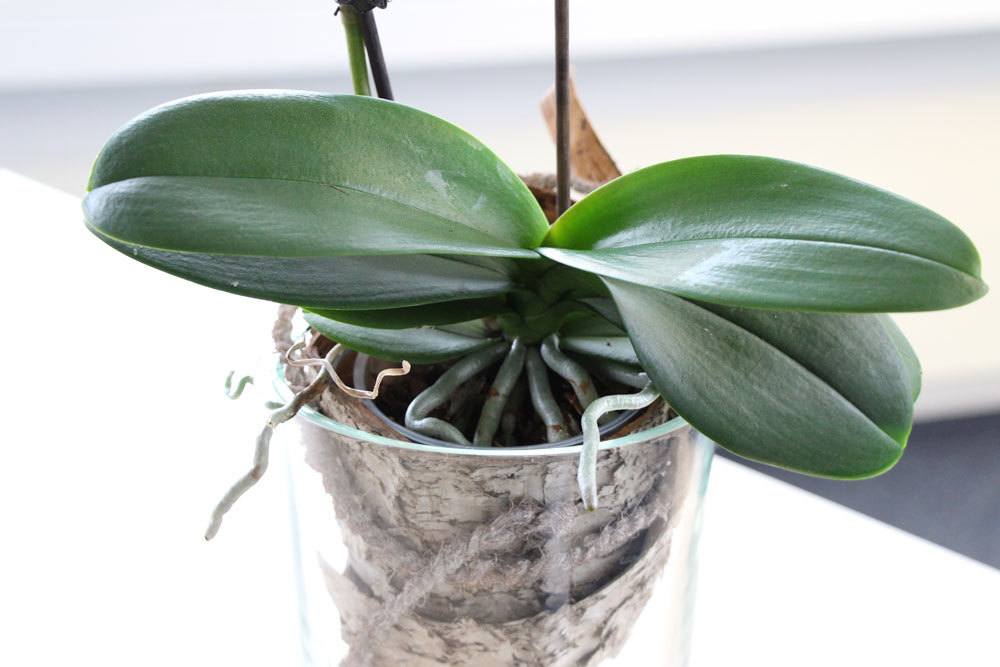Many of the orchid species that originate from the tropics and subtropics in particular do not grow in the ground, but hold on with their roots in the crowns of jungle trees. The roots of these so-called epiphytes or perching plants require more oxygen and air than the roots of “normal” plants growing in soil. In conventional potting soil, these orchids would quickly rot due to lack of oxygen and wetness. Therefore, a culture without soil – for example, in a glass – is preferable.
Contents
- 1 Advantages of soil-free cultivation for orchids
- 2 What are the options for orchid culture without soil?
- 3 Hydroponics
- 4 Prepare the rootstock
- 5 Prepare the orchid
- 6 Cover the roots
- 7 Tie up the orchid
- 8 Orchids in glass
- 9 Which orchid species are suitable for culture in glass?
- 10 Care
- 11 Location
- 12 Watering
- 13 Fertilizing
- 14 Author
Advantages of soil-free cultivation for orchids
Epiphytic orchids – i.e. those that perch on trees, etc., in their natural environment – do not require soil anyway. These species can be cultivated in pine bark, coconut fiber, white peat or seramis or a mixture, or entirely without substrate. Only earth orchids such as cymbids or Venus slipper orchids require a soil mixture of pine bark and seeding or seedling soil. The orchid soil should be as coarse as possible, because the substrate serves less as a water and nutrient reservoir than as a support for the plant and ensures sufficient air in the pot due to the large gaps between the substrate chunks. However, since water and nutrients are added exclusively by watering, culture in substrate is basically unnecessary.
In fact, the completely substrate-free culture offers interesting advantages:
- always enough light and air to the roots
- Water requirement of the plant immediately visible: no watering for green roots
- Watering only necessary for white roots
- substrate-free culture is very suitable for allergy sufferers or sensitive people
- as fungal spores and other allergens are often found in flower substrates
- orchid culture without soil at the same time without allergens
- in ready-bought orchid soil often introduced pests and diseases
- soilless culture in glass is an interesting eye-catcher

What are the options for orchid culture without soil?
In addition to substrate-free culture in a jar – which is not suitable for all orchid species – there are other ways to keep the beautiful flowers without soil. In this regard, some species prefer certain forms: While earth orchids, for example, will not be happy in a completely soil-free culture in the glass, epiphytic-growing species feel most comfortable in block culture. So before you decide on a form of cultivation, it is best to first look at the specific needs of the selected orchid species: these can in fact differ greatly from each other.
Hydroponics
Hydroponics works entirely without substrate, instead expanded clay or clay granules are used to stabilize the plant in the pot. However, this form of plant culture is only conditionally suitable for orchids, because the roots do not grow in water. Instead, they rot if they are constantly in the waterlogging. If you still want to grow your orchids in hydroponics, you should follow these tips.
- Always fill water level indicator only to “optimum”, never to “maximum”.
- orchid roots should never reach into the stagnant water
- Immediately remove and wash damaged roots.
- use only very coarse expanded clay – because of better permeability
- halve the dose of liquid fertilizer, but fertilize more frequently
- when moving the substrate, wash it out carefully – danger of rotting
Block cultivation
Block cultivation does not require a planting container or soil at all. It is particularly suitable for epiphytic orchids such as the popular Phalaenopsis. For this purpose, the orchids are tied to pieces of wood (for example, oak, beech or coniferous wood with solid bark). A special planting material, usually sphagnum moss (also known as swamp moss), is needed for tying on. The plants themselves are secured with copper wire, soft baling wire, or a cut-up nylon stocking. Be very careful when tying them on; under no circumstances should plant parts or roots be crushed. But never leave the roots or even the plants themselves just hanging loose, because this will cause the roots to detach from their base and eventually die.
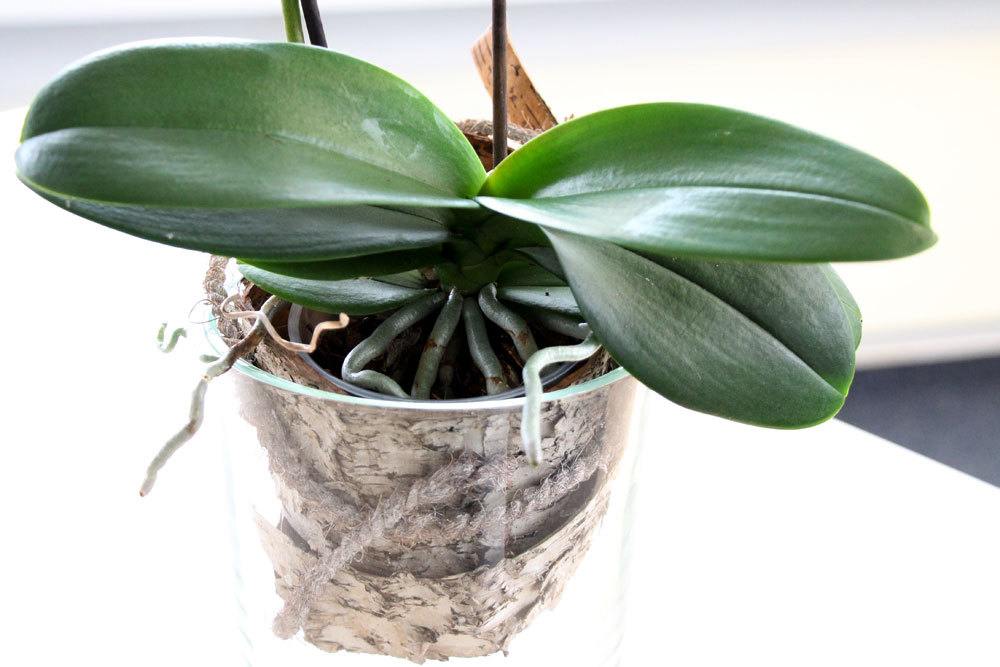
Tip: Block culture succeeds only at really high humidity, as is possible in a greenhouse, display case or terrarium. Also tied up orchids are fertilized with only half the recommended concentration, but correspondingly more often.
Converting orchids to block culture – here’s how:
If you want to convert your epiphytic orchids to the more natural block culture, it is best to proceed as described below.
Prepare the rootstock
Provide a cork or wood pad of suitable size with a wire hook at the top or center. Then cover it evenly with moist sphagnum.
Prepare the orchid
First, remove old roots and leaves from the orchid and carefully rinse out all substrate debris. Now place the roots on the substrate and spread them evenly.
Cover the roots
Cover the roots with moist sphagnum up to the root neck. You can leave very long roots protruding to the side.
Tie up the orchid
Now tie everything tightly together with binding wire, but not too tightly. Start at the root neck. Finally, cut the wire and tie it carefully.
Tip: Orchids grown in pots are best converted to block culture in the spring, although it is better to put very large plants in baskets: These specimens are in fact at risk, because in block culture the roots naturally dry out easily. Spray the plant and roots more frequently, then the changeover will be more successful and the orchid will adapt more easily.
Orchids in glass
Very nice to look at and especially suitable for many epiphytic species is the completely substrate-free culture in the glass. To do this, place the plant with bare roots in a tall glass with a wide opening – hyacinth jars in particular are just right for this purpose. When switching from pot to glass culture, make sure that no substrate residues are left hanging from the roots: These only encourage rot, so the roots need to be thoroughly cleaned. For this purpose, rinse the roots with running, lukewarm water, taking care not to bend or otherwise damage the delicate plant parts. After planting, pour about an inch of rainwater into the jar so that the roots hang slightly in the water. They quickly soak up and turn green.
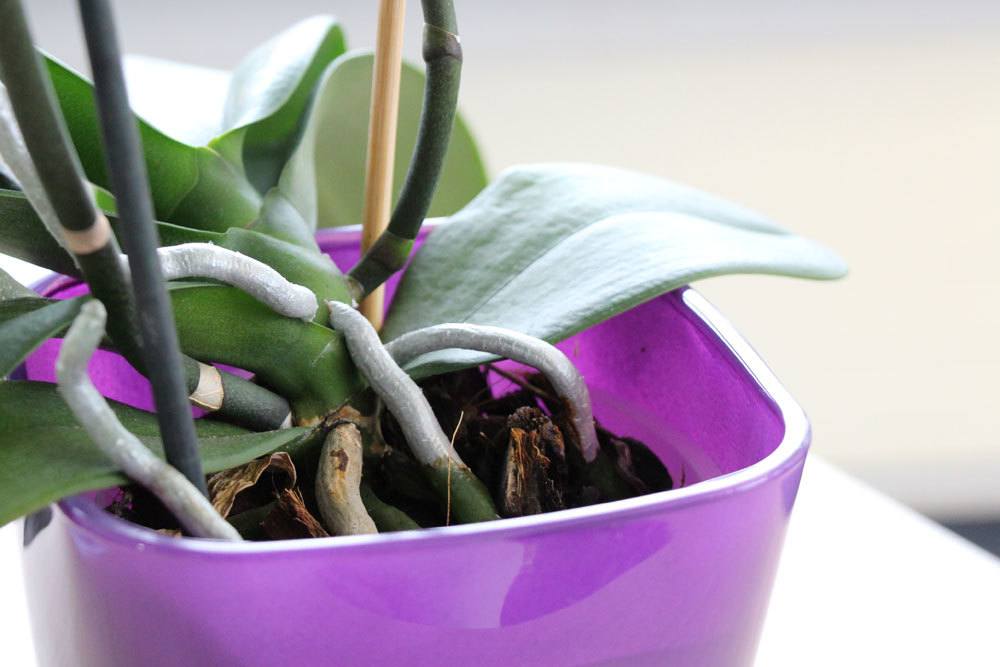
Tip: The jar is the right size when the orchid sits firmly in it without wobbling back and forth – even without supporting substrate. If the orchid still sits too loosely, better choose a smaller jar.
Which orchid species are suitable for culture in glass?
Epiphytic growing orchids are particularly suitable for substrate-free culture in glass. These plants, also known as epiphytic plants, originate mainly from warm and humid tropical or subtropical rainforests. Their living conditions in the room should be designed accordingly: warm, humid and bright – the latter, however, not necessarily directly sunny. The following species are made for glass culture.
Vanda from Southeast Asia, up to 50 centimeters high, very flowering and with a long flowering period.
Aerides from Southeast Asia, up to 40 centimeters high, very long flowering time
Ascocentrum from Southeast Asia, up to 40 centimeters high, flowering, forms flower clusters in intensive colors
Neofinetia from East Asia, up to 15 centimeters high, small, pretty flowers, difficult to cultivate
Tip: For cultivation in glass, choose orchids that remain small or grow slowly: Species that grow very large will not find support in this form and will also often need to be tied down or supported with the help of a stick. In addition, you can only select species whose roots are insensitive to light.
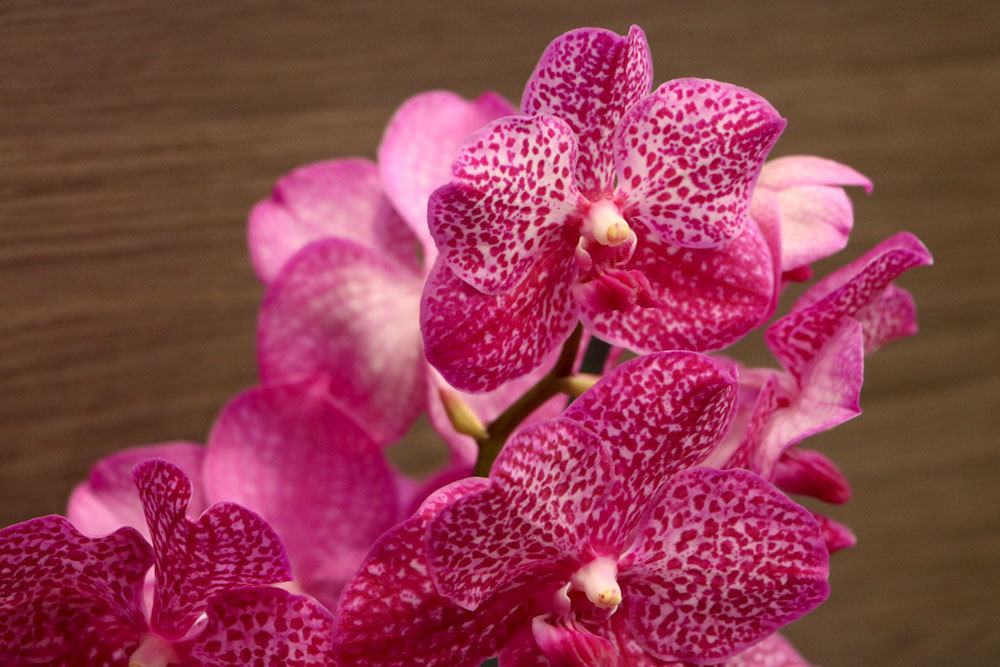
Care
Care for orchids in a glass properly – this is how:
In order for you to enjoy the magnificent blossoms of orchids for a long time, species-appropriate care is immensely important. Basically, orchids are not necessarily easy to care for, although the requirements can vary greatly. Some orchid species, such as many Phalaenopsis hybrids, are considered to be quite easy to care for and often thrive on the windowsill without any problems – provided they have sufficient (but not too much!) Light, are watered properly and fertilized sufficiently. Since it is mainly tropical orchids such as Vanda and the closely related species Aerides, Ascocentrum and Neofinetia that are cultivated in glass, the following tips now apply to them. Other orchids, however, have different needs.
Location
Location and light
Like all plants, orchids need light to perform photosynthesis. Although most species that grow in the light shade of other jungle plants do not tolerate direct sunlight. However, as plants of the tropics and subtropics, they are accustomed to receiving almost the same number of hours of light. For example, the length of the day near the equator is about 12 hours all year round – here, on the other hand, orchids get up to 16 hours of light in summer and often only two hours in winter. Therefore, in dark locations and during the winter months, supplemental light is usually necessary for the plants to thrive. Conversely, however, too much light can be harmful to plants: Especially in spring and summer, direct sunlight can burn the sensitive leaves.
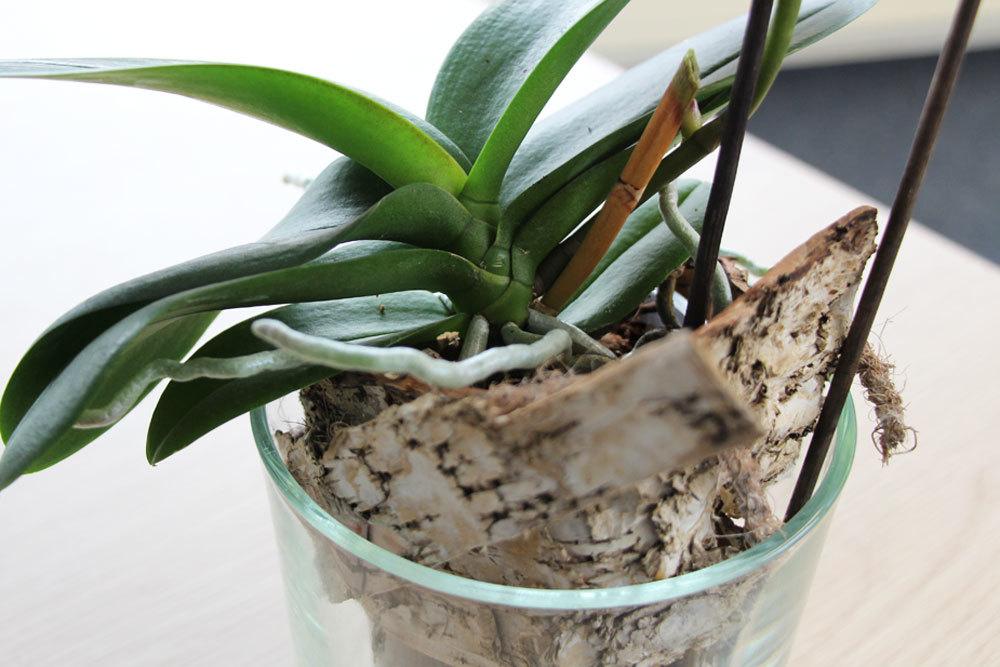
Watering
When substrate-free culture in a jar, you need to make sure that the orchids do not dry out. Healthy plants have firm, leathery leaves with a shiny surface. However, if the plant is too dry, the leaf surface becomes dull and sallow, and the leaves also fold up and become soft and pliable. Pay particular attention to these points in the water supply.
- always leave about one centimeter of water in the jar
- empty and refill water weekly
- do not water substrate-less cultivated orchids
- but immerse or spray instead
- spray orchids daily with room-warm water
- before spraying again, the roots should be dry
- green roots do not need water yet
- use only lime-free or decalcified water
- keep humidity constantly high
- in the leaf axils as well as in the heart at the shoot end no water may remain
- both leads to rotting
- always spray in the morning, then the plant can dry during the day
- flowers must not get wet
Tip: The biggest problem in the care of vandeas and their relatives on the windowsill is dry air, and with it the slow drying of the plant. As an immediate measure in case of drought, immerse the roots in water for two hours until they are saturated with moisture.
Fertilizing
If the culture is substrate-free, the orchids should be fertilized every two weeks between June and November. In December as well as in January, on the other hand, do not fertilize. Provide nutrients to the plant as follows.
- Bath the roots in a liquid fertilizer solution for ten minutes.
- plant should be soaked with liquid
- use only liquid orchid fertilizer
- but mix only half of the concentration recommended for pot orchids
- otherwise the salt content is too high for the roots.
Tip: Do not choose a houseplant fertilizer for your orchids, but always a special orchid fertilizer. It contains all the important trace elements in addition to the nutrients.

